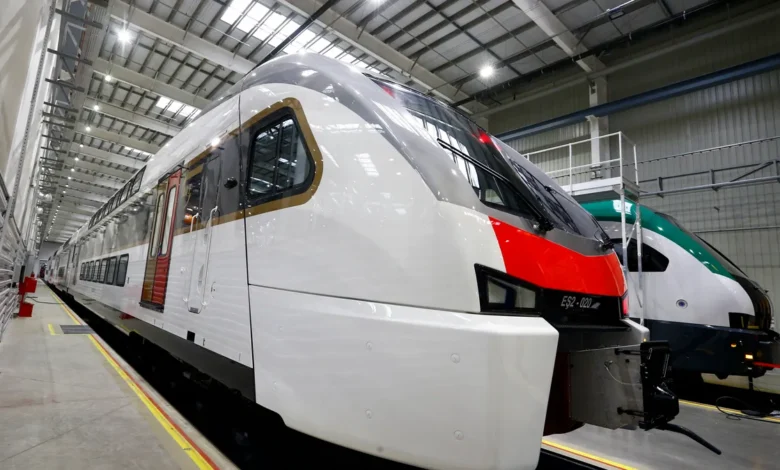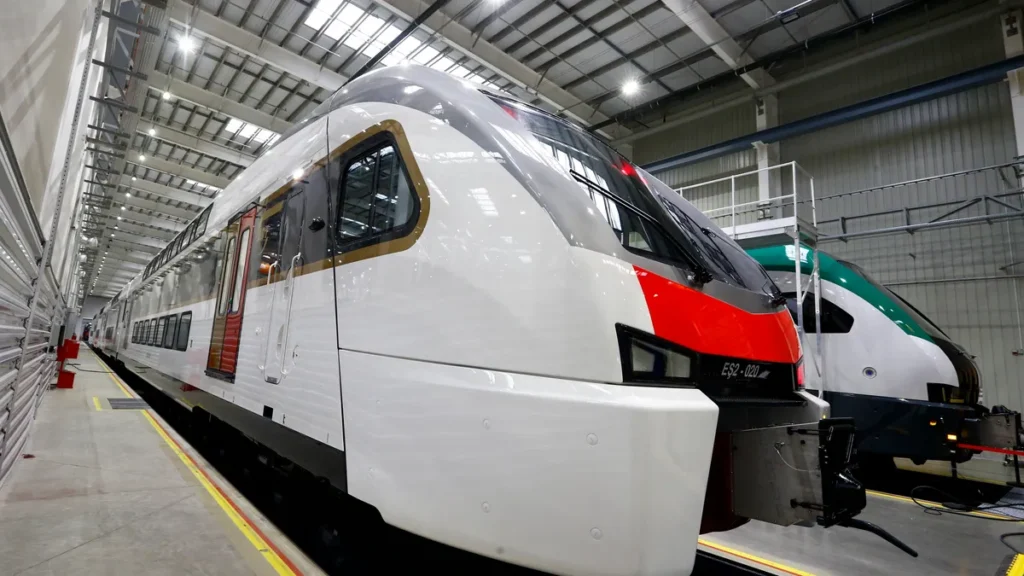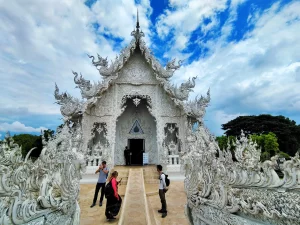The Top 10 African Countries with Outstanding Railway Systems

Which are The Top 10 African Countries with Outstanding Railway Systems? Several African countries have invested significantly in developing efficient and modern train systems that connect cities and contribute to economic growth and sustainability. These railway networks play a crucial role in enhancing transportation infrastructure, promoting trade, and facilitating the movement of people and goods across the continent.
What is a Railway System?
A railway system, also known as a railroad or train system, is a network of tracks, stations, and rolling stock (trains and other vehicles) that are used to transport passengers and freight. It’s a complex and vital transportation system that has existed for centuries and continues to evolve today.
Here are the key components of a railway system:
- Tracks: These are the steel rails that trains run on. They are typically laid on ballast, which is a bed of crushed stone that helps to distribute the weight of the train and keep the tracks in place.
- Stations: These are the places where passengers board and disembark from trains. Stations can be large and complex, with multiple platforms, tracks, and facilities such as ticket offices, shops, and restaurants, or they can be small and simple, with just a platform and a shelter.
- Rolling stock: This is the term used for the vehicles that run on the tracks. This includes locomotives, which are the engines that pull the trains, as well as passenger cars and freight cars.
- Signaling and control systems: These are the systems that are used to keep trains safe and running smoothly. They include signals that tell train drivers when it is safe to proceed, as well as systems that track the location of trains and prevent them from colliding.
Railway systems can be classified in a number of ways, such as:
- By type of traffic: They can be passenger railways, freight railways, or mixed-use railways.
- By power source: They can be electric railways, diesel railways, or steam railways.
- By gauge: This is the distance between the inside of the two rails. There are many different gauges in use around the world, but some of the most common are standard gauge (1,435 mm), broad gauge (1,520 mm), and narrow gauge (610 mm).
Railway systems play an important role in the transportation of people and goods. They are often the most efficient and environmentally friendly way to move large volumes of cargo over long distances. They can also be a vital part of public transportation systems, providing people with a safe and affordable way to get around.
Here are some of the benefits of railway systems:
- Efficiency: Trains can move large volumes of cargo over long distances very efficiently.
- Environmentally friendly: Trains are relatively low-emission compared to other forms of transportation, such as trucks and aeroplanes.
- Safety: Trains are a very safe mode of transportation.
- Affordability: Train travel can be very affordable, especially for long distances.
Here are some of the challenges facing railway systems:
- Cost: Building and maintaining railway infrastructure can be expensive.
- Congestion: Railway systems can become congested, especially in urban areas.
- Competition: Trains face competition from other forms of transportation, such as trucks and airplanes.
- Climate change: Climate change is a major threat to railway systems, as it can lead to more extreme weather events, such as floods and droughts, which can damage tracks and disrupt operations.
Despite these challenges, railway systems remain an important part of the transportation landscape. They are a vital mode of transportation for both people and goods, and they play an important role in the global economy. As technology continues to evolve, we can expect to see even more efficient and environmentally friendly railway systems in the future.
Top 10 African Countries with Outstanding Railway Systems
1. Algeria: A Model of Efficiency and Connectivity
Algeria boasts an extensive and well-maintained railway network, making it one of Africa’s top countries with outstanding train systems. The country has invested in high-speed trains, enhancing passenger travel and connectivity. The Metro d’Alger, located in the capital city of Algiers, consists of one line with ten stations, and construction is underway for an additional nine stations. In addition to the metro system, Algeria also has six other tramlines serving various cities, including Constantine, Oran, Ouargla, Sétif, Sidi Bel Abbès, and Mostaghanem.
2. South Africa: Reliability and Connectivity at its Best
South Africa’s railway system is renowned for its reliability and extensive connectivity. The country’s network spans across major cities, rural areas, and ports, facilitating both trade and travel. The state-owned commuter rail service, Metrorail, operates a 2,228-kilometer-long network with 471 stations. Tramways are also present in cities like Johannesburg, Cape Town, Durban, Port Elizabeth, Pietermaritzburg, and Pretoria, further enhancing transportation options for the population.
3. Tunisia: Efficiency and Punctuality Redefined
Tunisia’s rail network stands out for its efficiency and punctuality. It plays a crucial role in easing congestion on roads and highways, making it a preferred mode of transport for both locals and tourists. The Metro Leger de Tunis, an eighty-two-kilometer elevated system resembling a tram network, consists of five lines and serves sixty-six stops. Line 1 connects Tunis Marine and Ben Arous, Line 2 operates between Place de la Barcelone and Ariana, Line 3 connects Place de Barcelone and Cite Ibn Khaldoun, Line 4 runs between Tunis Marine and Keiredinne with plans for further extension, and Line 5 operates between Place de la Barcelone and El Intilaka.
4. Egypt: Enhancing Connectivity along the Nile
Egypt’s rail system has undergone significant upgrades in recent years, connecting major cities along the Nile River. The country’s capital city, Cairo, was the first African city to install a metro system. The Metro al Anfaq, opened in 1987, consists of two lines with a total of fifty-three stations. Cairo is also served by a 30-kilometer-long tram system, linking central Cairo with three cities in the country. Ongoing developments include the construction of another metro line and a monorail system, both set for completion in 2020.
5. Morocco: A Testament to Modernization
Morocco’s railway network showcases the country’s commitment to modernization. The launch of the high-speed rail line, Al-Boraq, in 2018 connected Casablanca and Tangier, offering a swift and comfortable travel experience. The country also operates two tramways, the Casablanca tramway and the Rabat–Salé tramway, further enhancing transportation options for the population.
6. Nigeria: Steady Improvement and Ambitious Expansion
Nigeria’s rail infrastructure is steadily improving, with ambitious plans for expansion and modernization. The Lagos-Kano line is a significant development, showcasing the nation’s commitment to rail transportation. As the country continues to invest in upgrading its railway system, it aims to enhance connectivity, improve travel efficiency, and boost economic growth.
7. Senegal: Driving Economic Growth through Railways
Senegal’s rail system plays a vital role in driving economic growth. It connects the capital city, Dakar, with various regions, facilitating the transportation of goods and passengers. The country has been investing in expanding and modernizing its railway network to further enhance connectivity and support economic development.
8. Kenya: Transforming Travel with the Standard Gauge Railway
Kenya’s Standard Gauge Railway (SGR) has revolutionized travel between Nairobi and Mombasa. The SGR has significantly reduced travel time, offering a comfortable and efficient transportation option. The railway has played a crucial role in boosting trade and tourism, contributing to Kenya’s economic growth.
9. Zimbabwe: Crucial for Goods Transportation
10. Tanzania: Expanding and Enhancing Connectivity

Tanzania’s rail system is undergoing substantial expansion, with the Dar es Salaam-Morogoro line being a highlight. These developments aim to improve transportation options, connect major cities, and boost economic growth. The country’s commitment to enhancing its railway network contributes to the overall development and prosperity of Tanzania.
Conclusion
Africa’s commitment to improving its train systems is evident in the progress made by these top 10 countries. Their investments in railway infrastructure, connectivity, and sustainability are transforming transportation across the continent. As these networks continue to expand and modernize, they not only enhance mobility but also contribute to economic development and improve the quality of life for the people of Africa.





